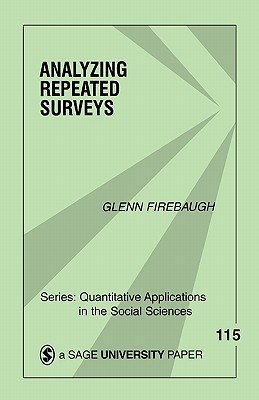
- We will send in 10–14 business days.
- Author: Glenn Firebaugh
- Publisher: SAGE Publications, Inc
- ISBN-10: 0803973985
- ISBN-13: 9780803973985
- Format: 15.2 x 20.2 x 0.5 cm, minkšti viršeliai
- Language: English
- SAVE -10% with code: EXTRA
Reviews
Description
Repeated surveys -- a technique for asking the same questions to different samples of people -- allows researchers the opportunity to analyze changes in society as a whole. This book begins with a discussion of the classic issue of how to separate cohort, period, and age effects. It then covers methods for modeling aggregate trends; two methods for estimating cohort replacement′s contribution to aggregate trends, a decomposition model for clarifying how microchange contributes to aggregate change, and simple models that are useful for the assessment of changing individual-level effects.
EXTRA 10 % discount with code: EXTRA
The promotion ends in 22d.20:03:36
The discount code is valid when purchasing from 10 €. Discounts do not stack.
- Author: Glenn Firebaugh
- Publisher: SAGE Publications, Inc
- ISBN-10: 0803973985
- ISBN-13: 9780803973985
- Format: 15.2 x 20.2 x 0.5 cm, minkšti viršeliai
- Language: English English
Repeated surveys -- a technique for asking the same questions to different samples of people -- allows researchers the opportunity to analyze changes in society as a whole. This book begins with a discussion of the classic issue of how to separate cohort, period, and age effects. It then covers methods for modeling aggregate trends; two methods for estimating cohort replacement′s contribution to aggregate trends, a decomposition model for clarifying how microchange contributes to aggregate change, and simple models that are useful for the assessment of changing individual-level effects.


Reviews